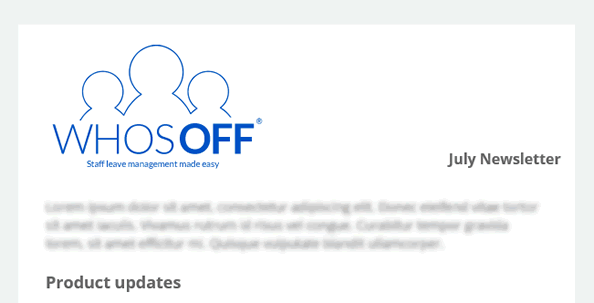We spend so much time at work that a good perks package can make a real difference to employee satisfaction. But what is it that people really want from their employer; a generous pension scheme? Annual bonuses?
It may surprise you to learn that neither of these benefits topped the list in a recent Aviva study. As it turns out, employees want a generous annual leave allowance more than any other incentive.
This seems like a winning scenario for company bosses, as increasing paid leave is cost-effective and easy to implement – in theory. But in practice, offering people more time off can have major implications for productivity and working standards, if organisations fail to manage holiday request processes effectively.
Forget bonuses; employees would rather have more time off

When it comes to keeping the workforce happy, new research has proven that paid leave is pivotal. In a study of UK professionals, 44% said they would be interested in receiving 22-35 days’ holiday a year over other benefits such as a good pension scheme (41%), flexible working policies (39%), and even bonus and profit share schemes (25%).
This will be music to many employers’ ears, as annual leave increases are straightforward to offer, and aren’t as expensive as many other perks. However, if the initiative isn’t managed correctly, it could end up being more costly than you initially anticipate.
The reason for this is that many businesses are ‘making do’ with leave management systems that are no longer fit for purpose. Paper-based request forms and manual spreadsheets make taking time off a long-winded process, often resulting in inaccuracies, and it’s hard for the wider team to know exactly who’s off at any point in time.
Extending paid holiday allowances will push these outdated systems to breaking point, creating scenarios in which employers find themselves under-staffed – with your business relationships and results suffering as a consequence.
Improving leave management alongside policies
Any company considering improvements to your annual leave package should first think about how you are going to manage the additional admin this will generate. For many firms, a change in policy should coincide with an upgrade in holiday booking software, which can offer a more sophisticated approach to workforce management.
For example, a good leave management platform will give every single person in your company access to a central holiday calendar, so the whole team can see exactly who is in the office and who is on holiday at any point in time. In addition to increasing the visibility of paid leave bookings, information such as external meetings and sick leave can be integrated into this dashboard, for an accurate picture of exactly who is available to work.
When it comes to co-ordinating the leave request process, upgrading to a better online holiday booking system will digitise submissions, so that HR or managerial staff are automatically notified when someone wants time off.
In addition to saving on paper, this speeds up chain of command, and the approval person can look at your central calendar and check for conflicts of interest, before giving requests the green light. This is especially important during peak holiday periods such as the summer and Christmas, ensuring that there aren’t too many key personnel on leave at the same time.
Enhancing the way staff holiday is managed can also cut down on tedious communications, so people can focus on more valuable tasks. Automatic notifications mean team members don’t have to send follow-up emails to check if their request has been approved, and some leave management platforms enable certain types of leave – such as external meetings – to be entered directly into the system by any employee.
Make light work of workforce management
Nurturing and retaining talented staff is a key focus for any business, and it’s interesting to see the positive impact that non-monetary incentives like extending annual leave allowances have on these areas. But if you take the plunge and decide to offer more holiday to your workforce, it’s important the right systems are in place to ensure the reality lives up to the hype.
Investing in an online leave management solution can future-proof your people management process, ensuring your business can cope with as many days off as your employees want to take – without it impacting your bottom line. This way, staff enjoy more time off, and you ensure standards of service remain consistent.
WhosOff can transform the way your company manages annual leave. Request a free trial to start exploring our platform.
Photo by Public Domain Pictures from Pexels.com

